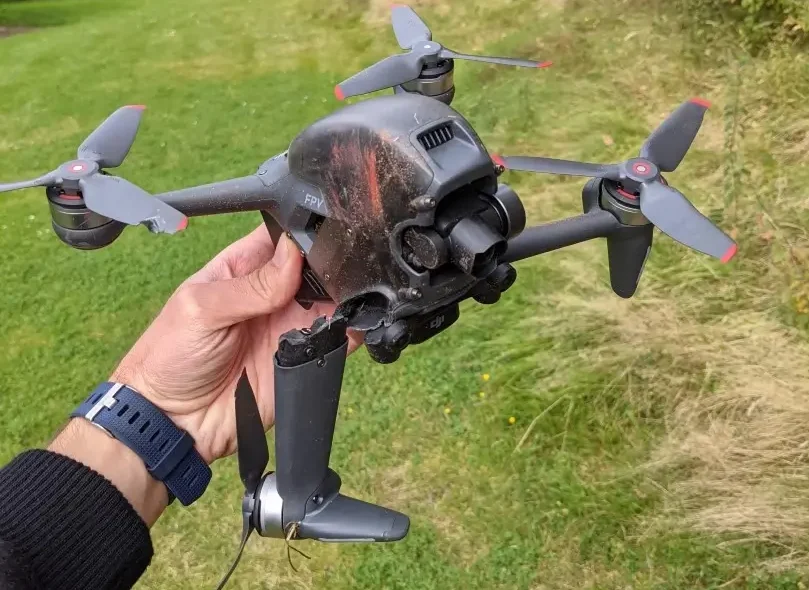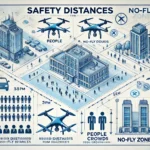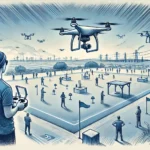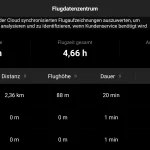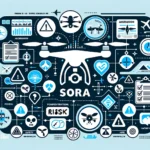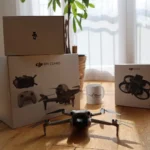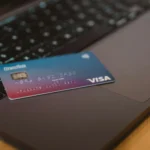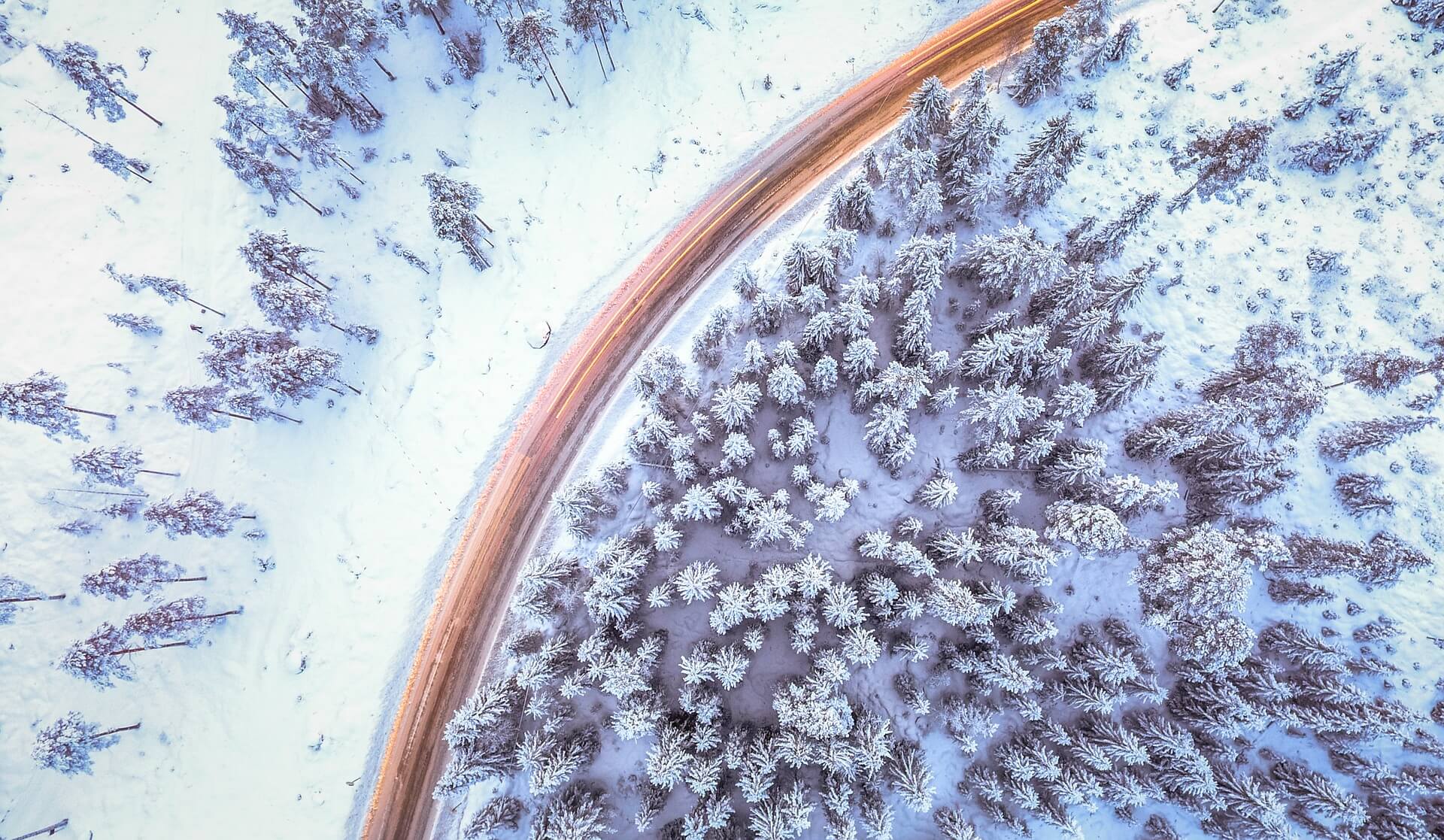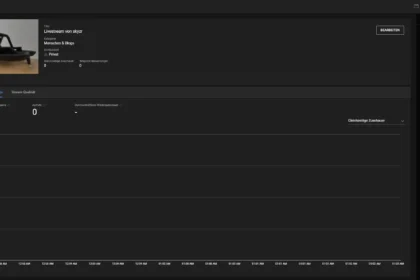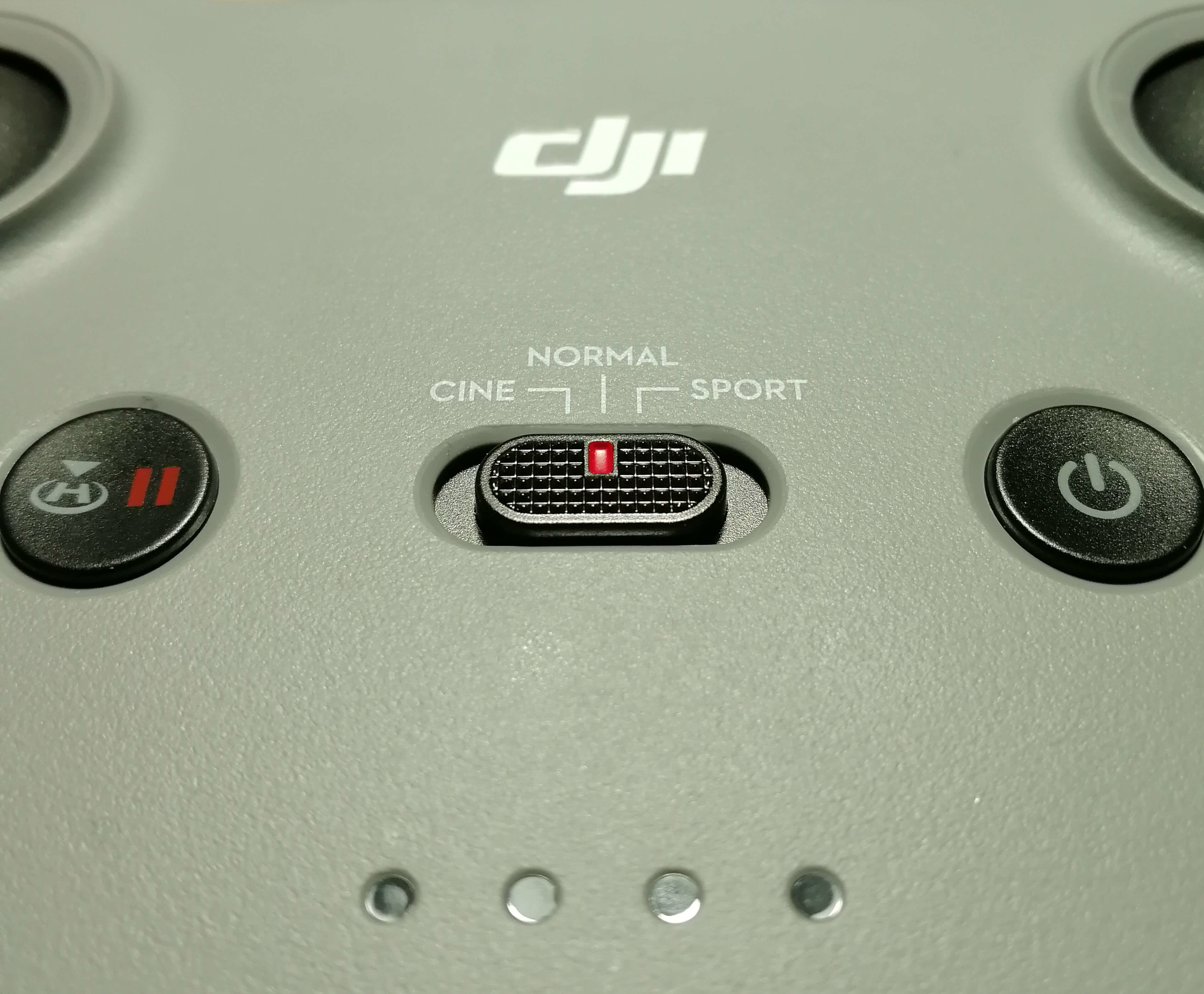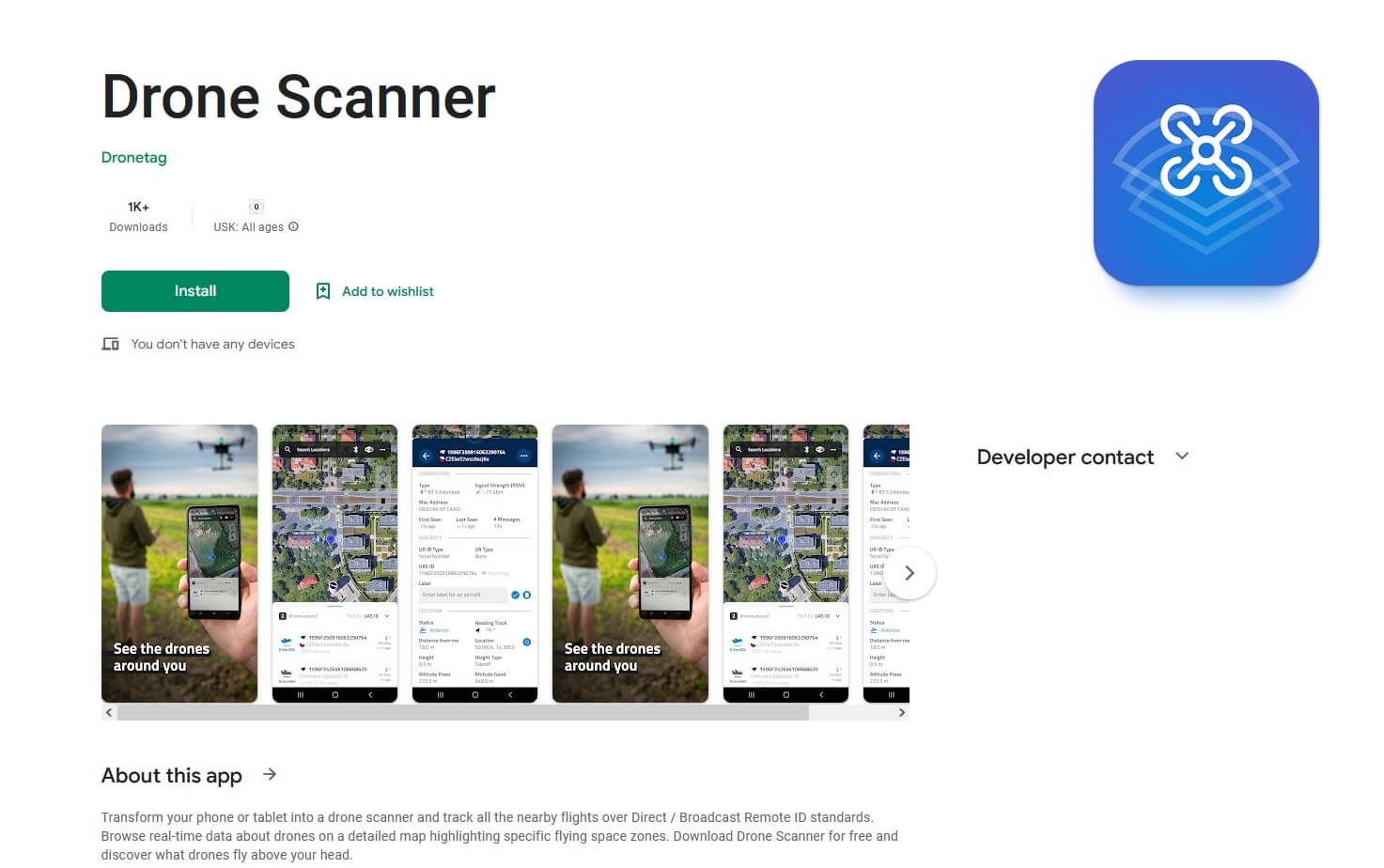It’s every drone pilot’s nightmare: A moment of carelessness, a technical problem or a sudden change in the weather and the drone crashes. In such situations, it is important to stay calm and take the right measures to minimise the damage and avoid future crashes.
In this article, you will find out what to do after a crash, what to do if people or other people’s property are affected and how you can better protect yourself in the future.
Checklist: What do I do after a drone crash?
- Keep calm
- (If people are affected: provide first aid)
- Secure the crash site
- Recover the drone and check the battery
- Assess initial damage
- Document the crash (if insured event)
- Comprehensive damage analysis
- Carry out repairs (if necessary)
- Test the drone thoroughly
Keep calm after the drone crashes
Even if it scares you, the most important thing after an accident is to stay calm. Panicking will not help you and can even make the situation worse. Take a moment to collect yourself and think clearly before continuing.
First steps: immediate measures after your drone has crashed
Find and secure the drone
After your drone has crashed, you should first secure its location (How to find your drone again). Consider whether you are in an area that could be potentially dangerous, such as near roads or in a busy area. It’s important not to take any risks. If the drone is on a road or in an area that is difficult to access, you should first ensure your own safety and that of others.
Secure the area and approach the drone carefully. Look out for parts that may have been scattered along the way after the crash.
Switch off the drone and check the battery
Once you have safely recovered the drone, you should first switch it off to avoid any unexpected movements or take-off attempts. Then you should take a look at the battery. If you notice any visible damage to the battery, such as cracks or dents, you should only approach the battery with caution and never continue to use it. A defective battery can be dangerous and must be disposed of properly! If possible, carefully remove the battery from the drone and put it to one side.
Check the condition of the drone and the surroundings
In the next step, you should carry out an initial quick damage check of the entire drone. Start with the propellers, as these are often damaged in a crash. Check them for breakage or deformation. If even just one propeller is damaged, the drone must not be restarted under any circumstances, as this can lead to further damage.
Next, take a look at the camera and the gimbal. If the camera is loose or the gimbal is hanging unnaturally, this could be an indication of damage to the electronics. The drone’s housing and stabilisers (arms) should also be carefully inspected. Even small cracks can affect flight stability and require repair.
After you have secured and checked the drone, you should check the area around the crash site. It is possible that parts of the drone may have fallen off during the crash, such as propellers or other small parts. Search the surrounding area thoroughly, as these parts may be needed for a complete repair.
At the same time, you should also check whether the crash has caused any damage in the surrounding area, e.g. to buildings, cars or other objects (see below).
Did your drone land in water when it crashed? Then our article Rescuing a wet drone from the water – tips and tricks will help you.
Documenting the crash
Finally, it is advisable to carefully document the crash. Use your smartphone or a camera to take photos of the crash site and the condition of the drone. These images can later be helpful for the insurance company or for analysing the incident.
Also make a note of the exact circumstances of the crash: When and where did it happen? What was the weather like? Were there any irregularities before the accident? This information will not only help you to better understand the incident, but also to avoid future accidents.
💡 Tip: If you keep a flight logbook, you can enter this information there and have documented the incident in this way.
If third parties are affected: What to do in the event of personal injury and property damage?
An accident is always annoying, but the situation is even more serious if other people or property are damaged. In such cases, the following steps should be taken:
- Injured persons: If someone has been injured as a result of the fall, administer first aid immediately and call the emergency services if necessary. Safety is now the top priority.
- Material damage to third-party property: Has your drone damaged a car, a building or other objects? Then document the damage as accurately as possible and inform the owner. A quick call to your liability insurance company can also be helpful.
- Liability insurance: Liability insurance for drones is mandatory in the EU and you will certainly be grateful for it now. Report the damage immediately. The insurance company will support you in settling the claim and will cover any costs incurred.
Next steps
Detailed damage assessment and repair options
Once you have taken the first steps after the crash, it is time to assess the damage to your drone in more detail. Start by systematically examining the drone. Look at all the important parts: the propellers, the housing, the camera and the gimbal. You can usually repair minor damage such as broken propellers or scratches on the housing yourself. Spare parts such as propellers or housing parts are often available cheaply and are relatively easy to replace.
However, caution is advised in the event of major damage, particularly to the electronics or load-bearing parts of the drone. If the camera is loose, the gimbal is crooked or there are signs of cracks in the arms or housing, the stability and functionality of the drone may be impaired. In such cases, it is advisable to leave the repair to a specialist.
🛑 Caution: We strongly advise against carrying out repairs to the drone’s electronics yourself without specialist knowledge!
Many manufacturers offer specialised repair services for their models, which can restore the drone to optimum condition. Coverage such as DJI Care Refresh can also be helpful. This is a type of comprehensive drone insurance.
If you have separate comprehensive drone insurance, check whether the damage is covered. Insurance companies often cover the costs of repairing or, in the case of major damage, even replacing the drone. If you report the damage in good time and provide the necessary documentation – such as photos of the crash and a description of the incident – this can help to ensure a smooth settlement.
Test the drone thoroughly
If there is no visible damage or if it has been repaired professionally, you should definitely test the drone thoroughly. This will ensure that your drone will function properly after the crash and possible repair.
Ideally, you should also document this check. On the one hand, you can make sure for yourself that you have tested all the important functions, and on the other hand, you can also prove to third parties (e.g. the insurance company) that the drone has been tested and is really ready for use.
Accident prevention tips: how to avoid future accidents
There are a few precautionary measures you can take to prevent this from happening again:
- Regular maintenance: check your drone regularly for wear and damage. A quick check before every flight can prevent many problems.
- Flight planning and weather conditions: Plan your flights carefully and pay special attention to weather conditions. Wind, rain and other factors can strongly influence the control of your drone.
- Pilot training: Even if you already have experience, it is worth taking part in regular training courses or workshops. This will allow you to improve your skills and learn how to react better in critical situations.
- Take out comprehensive insurance: Although comprehensive insurance will not help you prevent crashes, it can cover the financial damage to your drone. Do not confuse hull insurance for your drone with the legally required drone liability insurance! Hull insurance covers the damage to your drone. Liability insurance covers damage to third parties.
Summary
A drone crash is annoying, but with the right measures you can limit the damage and learn valuable lessons from it. Firstly, stay calm, secure the crash site and check the drone for damage. If people or third-party property are affected, act responsibly and inform the relevant authorities. A careful assessment of the damage will help you decide whether you can repair the drone yourself or need professional help. Remember that regular maintenance and good preparation are the best ways to avoid future accidents. With these tips, you will be well equipped to take off again safely even after a crash.


